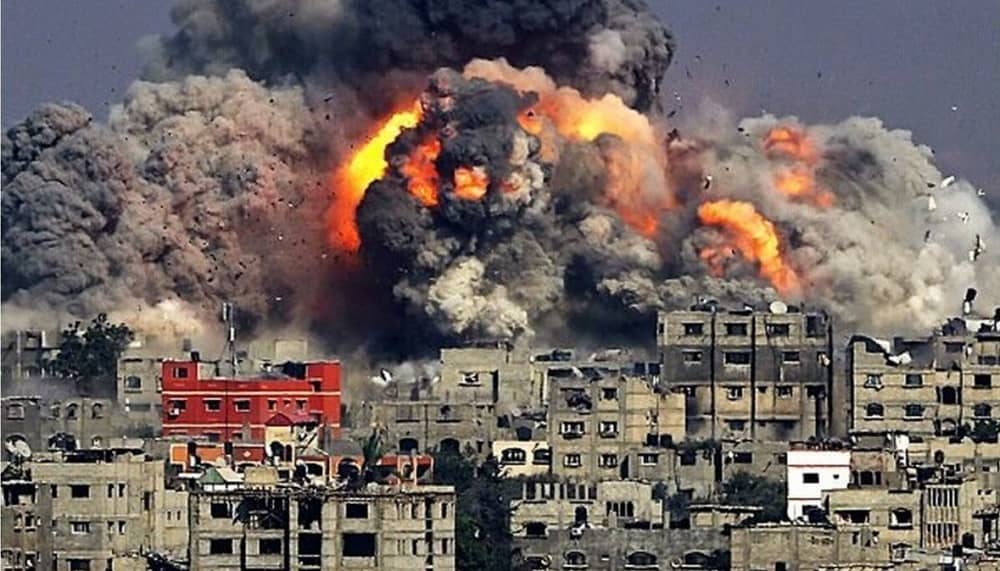
The recent eruption of war in Gaza, which resulted in the devastating loss of thousands of innocent lives and led to significant destruction, has generated significant scrutiny.
Questions are emerging, not just from policymakers but also from the global populace. What sparked this war? Who played a crucial role in setting the stage for it? What steps are necessary to bring about a ceasefire? And, more profoundly, what can pave the way for long-lasting peace in the Middle East?
A thorough analysis reveals the intricate web of geopolitical dynamics at play, much like a detective piecing together the evidence in a murder investigation. One of the key players emerging in this narrative is the regime in Tehran.
Iran’s role in fueling international tensions is not a new revelation. Their strategy, as evident from their policies, often leans towards inciting chaos in other nations, seemingly to divert attention from their internal issues. As openly admitted by Supreme Leader Ali Khamenei and highlighted by the Kayhan daily newspaper on October 28, the regime believes that entangling in conflicts in regions like Iraq, Syria, Lebanon, and Yemen can prevent unrest at home. The editorial explicitly states, “It has been the policy of the Islamic Republic to confront external threats to prevent any internal security issues.”
MUST-READ. MAKE SURE WATCHING THE VIDEO CLIP AT THE END OF THE ARTICLE: #Iran’s Regime: A Major Obstacle in the Way of Longstanding Peace in the Middle East https://t.co/I1Cq6YIJZO
— Ali Safavi (@amsafavi) February 15, 2022
Further supporting these claims, the Iranian regime is unique in its open allocation of official budgets for interference in neighboring countries. As confirmed by proxy forces in Lebanon, they have received considerable financial aid from Iranian officials like the late IRGC Quds Force Commander Qasem Soleimani. Such investments in regional unrest were again confirmed on October 27 by Khamenei’s representative in Bandar Abbas, who mentioned a significant allocation of the country’s military budget during the Gaza crisis.
In a bold display, the regime openly celebrates the outbreak of regional conflicts. Rallying cries for further bloodshed are evident, with state officials and Friday Prayer sermons expressing eagerness for continued strife.
Domestically, the regime in Iran fears internal discord. They believe that regional conflicts can suppress potential uprisings. Ahmad Almolhoda, a close associate of Khamenei and the Friday prayer leader in Mashhad, expressed his satisfaction over the eruption of the recent war, believing it thwarts the efforts of “enemies” who wish to overthrow the current order.
The Iranian leadership’s stance remains clear. Instead of promoting peace and stability, they advocate for threats and potential escalation, as evidenced by Khamenei’s statement on October 17.
World powers must stop giving concessions and abandon the appeasement of the murderous religious fascism ruling #Iran, and recognize the Iranian people’s right to resistance and freedom. https://t.co/HzbLr8PWI2 pic.twitter.com/ehKH5oeRE2
— Maryam Rajavi (@Maryam_Rajavi) October 30, 2023
Given the evidence, the Iranian regime’s significant influence in the Gaza conflict is undeniable. With internal tensions rising, Khamenei appears willing to employ any strategy to prevent domestic crises and any potential overthrow of his regime.
However, as history often demonstrates, regimes cannot indefinitely suppress societal change. As the focus sharpens on Iran’s actions, many are hopeful for a paradigm shift in the region, with calls growing louder for a regime change in Tehran.

MEK Iran (follow us on Twitter and Facebook), Maryam Rajavi’s on her site, Twitter & Facebook, NCRI (Twitter & Facebook), and People’s Mojahedin Organization of Iran – MEK IRAN – YouTu
